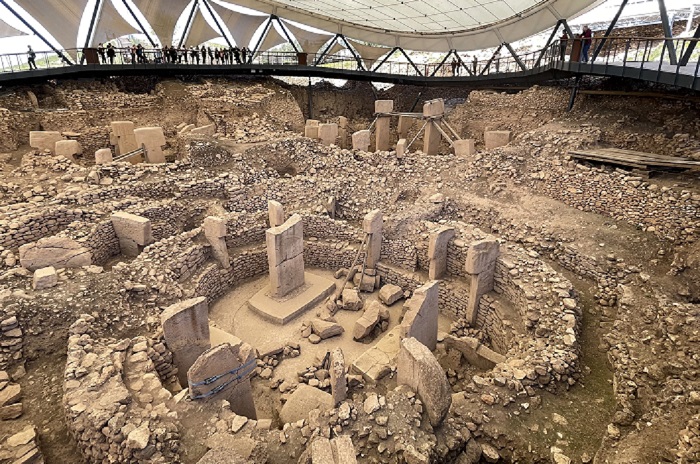Here are 8 Historical Facts About the World’s Oldest Temple, Göbekli Tepe

Göbekli Tepe is an archaeological site located in southeastern Turkey and is considered the world’s oldest known temple complex. Dating back to the Neolithic period, it has provided valuable insights into the early stages of human civilisation. Here are eight historical facts about the Göbekli Tepe you probably didn’t know.
Age and Discovery
Göbekli Tepe is estimated to be around 11,000 to 12,000 years old, making it significantly older than other ancient sites like Stonehenge and the Egyptian pyramids. The site was first discovered in 1994 by German archaeologist Klaus Schmidt, who recognized its importance as a prehistoric religious complex.
Neolithic Construction
The site consists of massive, T-shaped stone pillars arranged in circular patterns. These pillars, some reaching up to 20 feet in height and weighing several tons, were intricately carved with animal and abstract symbols. The construction techniques used at Göbekli Tepe challenge previous assumptions about the capabilities of early Neolithic societies.
Ceremonial and Religious Significance
Göbekli Tepe is believed to have served as a ceremonial and religious centre rather than a permanent settlement. The absence of domestic structures and the elaborate carvings on the pillars suggest a focus on ritualistic activities. The site’s purpose remains a subject of scholarly debate, with theories ranging from a religious pilgrimage site to a place for communal feasting and social gatherings.
Animals in Carvings
The pillars are adorned with intricate carvings of various animals, including foxes, snakes, scorpions, and birds. These carvings are thought to have held symbolic and possibly mythological significance to the ancient builders.
Multiple Construction Phases
Göbekli Tepe underwent several phases of construction and modification over the centuries. The oldest layer dates back to around 9600 BCE, while later phases indicate ongoing use and renovation.
Monolithic Architecture
The monumental pillars at Göbekli Tepe were carved from local limestone quarries and transported to the site. The builders utilised primitive tools and techniques, displaying a level of architectural sophistication unexpected for the Neolithic era.
Abandonment
Around 8000 BCE, Göbekli Tepe was deliberately buried, with the massive stone pillars covered by layers of soil. The reasons for the intentional burial remain unclear, and it adds to the mystery surrounding the site’s purpose and use.
Historical Significance
Göbekli Tepe challenges traditional views on the development of complex societies. Its existence suggests that sophisticated religious and communal practices predate settled agriculture, forcing a reevaluation of the relationship between early humans, monumental architecture, and social organisation.




